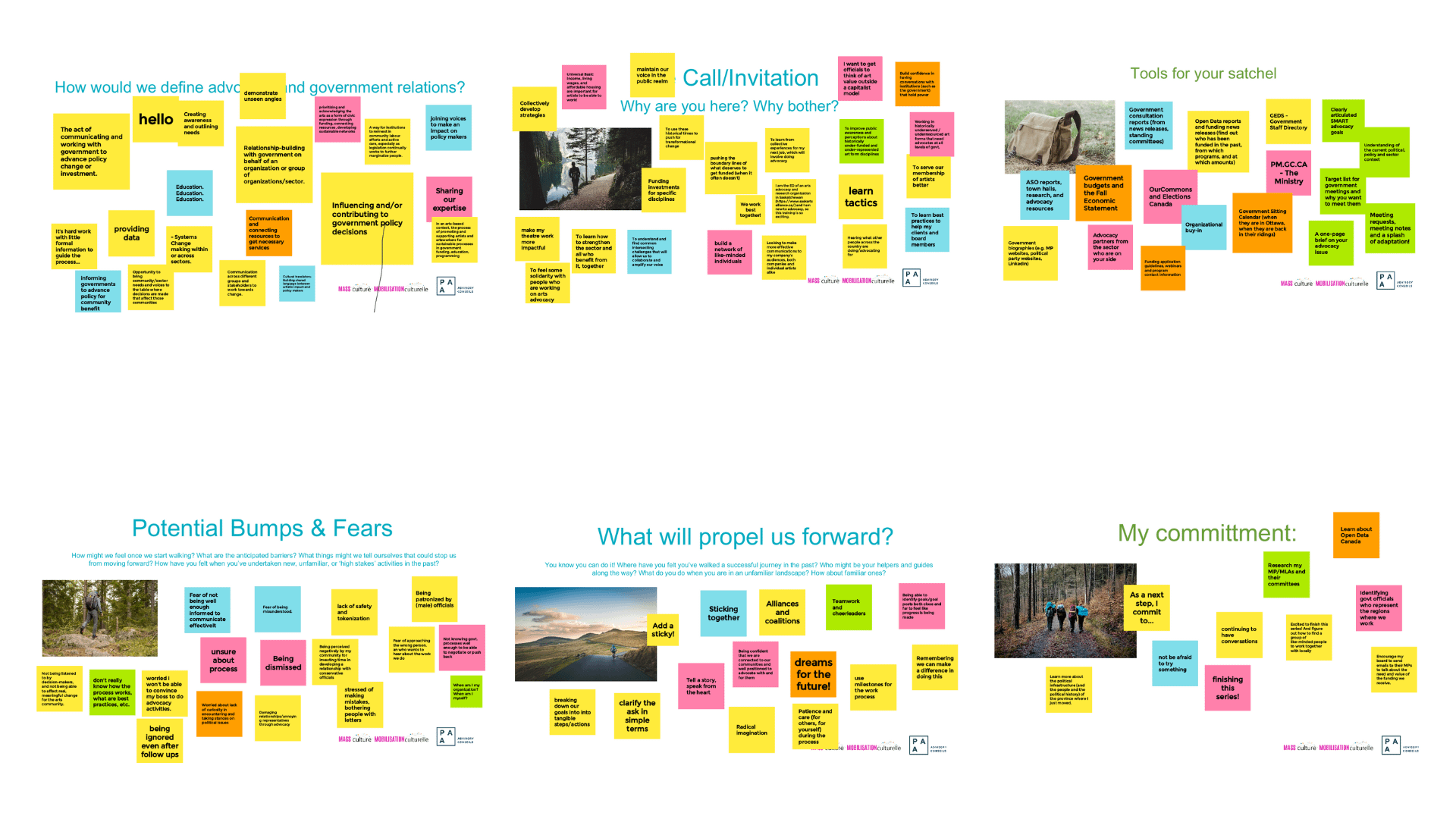Democracy shouldn’t be a well-kept secret. So let’s discover the tools of the trade, the ‘insider tips’ that make arts advocacy possible, and get started!
Like any undertaking, if we have enough motivation, if we know where to look, and if we can find people to hire or help, we are capable of making advocacy and government relations a key part of the arts manager’s toolkit.
On November 23rd, the first webinar for our T.R.A.I.N stream, “Why bother?! Arts Advocacy & Activism” brought together around 20 individuals, to map out the pathways and barriers to advocacy participation and how to get ‘unstuck’.
We mapped out our definitions of arts advocacy and government relations, our motivations, potential bumps and fears along the road, and how to move forward. Check out the Jamboard generated from the discussion, and use the arrows at the top to scroll through.

Choosing advocacy as a priority
Like any other facet of our work, advocacy and government relations requires care and capacity. And, also like any other facet of our work, it is a skill that can be learned with the right mentors, teamwork, and lived experience.
For an individual, this may mean prioritizing the cause, making the time, and connecting with other individuals and organizations. For organizations, this may mean securing buy-in from your colleagues, dedicating at least one staff person, and/or hiring external consultants to help you navigate and coordinate.
We wanted to provide the initial steps to simply get started. One bite at a time, you will absolutely be able to move forward on an issue you care about. Whether it’s a big picture policy change, or access to a public grant program, IT IS POSSIBLE!
Here are the first steps in our playbook to get you started
- First, above all else, determine what you want to advocate for.
- Who else cares? Connect with peers (artists, arts organizations, arts service organizations) in the sector to see if they have similar concerns
- Prepare a draft, one-two page brief on your issue that could eventually be shared with government. This will function as your base text that can also be expanded for larger government consultations (more on ‘how to’ in our next webinar on January 11th!)
- Continue to engage and collaborate with your peers and your community. Who will advocate with you? Does your issue fully reflect the community context?
✨ THE CHALLENGE, should you accept:
Referring to the steps above, draft a one-two page brief on your advocacy issue before our next webinar on January 11th.
In your brief, include a main recommendation for government, some context on the issue (stories and stats), and a short ‘About Us’ and ‘Contact’ section on you, your organization and/or community. It doesn’t have to be perfect at this stage!
Here's what's next
Next up in the advocacy playbook, we’ll review the government structure and how your voice(s) can be amplified in the policy process. We’ll look at how to fully understand how your issue can align with government, better refine your advocacy goal, who to talk to, and where to participate as an active partner in policy development.
January 11
Your voice in policy development- participating in government consultations and the government budget cycle
February 8
Who to talk to in government? Build your government network, even if you don’t yet know anyone!
February 22
How to do a Hill Day
March 8
Mock government meetings!
Learn more about each session for our “Why Bother?! Arts Advocacy and Activism” series at this link.
